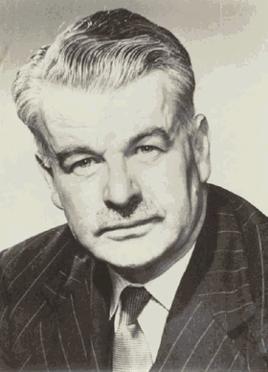Gerard Sweetman facts for kids
Quick facts for kids
Gerard Sweetman
|
|
|---|---|
 |
|
| Minister for Finance | |
| In office 2 June 1954 – 12 February 1957 |
|
| Taoiseach | John A. Costello |
| Preceded by | Seán MacEntee |
| Succeeded by | James Ryan |
| Teachta Dála | |
| In office February 1948 – 28 January 1970 |
|
| Constituency | Kildare |
| Senator | |
| In office September 1943 – March 1948 |
|
| Constituency | Agricultural Panel |
| Personal details | |
| Born |
Hugh Gerard Sweetman
20 June 1908 Ballinteer, Dublin, Ireland |
| Died | 28 January 1970 (aged 61) Monasterevin, County Kildare, Ireland |
| Political party | Fine Gael |
| Spouse |
Rosalind Mansfield
(m. 1941) |
| Children | 3 |
| Relatives |
|
| Education | Downside School |
| Alma mater | |
Hugh Gerard Sweetman (born June 20, 1908 – died January 28, 1970) was an important Irish politician. He was a member of the Fine Gael political party. From 1954 to 1957, he served as the Minister for Finance.
He was also a Teachta Dála (TD), which is like a member of parliament in Ireland. He represented the Kildare area from 1948 to 1970. Before that, he was a Senator from 1943 to 1948.
Contents
Gerard Sweetman's Early Life and Family
Hugh Gerard Sweetman was born on June 20, 1908. His father, James Sweetman, was a barrister, which is a type of lawyer. The family lived in Dublin and had several servants.
His mother, Agnes, was the daughter of Sir George Fottrell. Gerard had three brothers: Séamus, George, and Denis. His brothers served in World War II. Sadly, Denis was killed in 1940.
Gerard's uncle, Roger Sweetman, was also a politician. He was one of the first TDs to suggest a peaceful end to the Irish War of Independence.
Gerard went to school in England at Downside School. He then studied at Trinity College Dublin. In 1930, he became a solicitor, another type of lawyer.
Starting His Political Journey
Gerard Sweetman first got involved in politics with a group called the Blueshirts. He was part of their youth section, the League of Youth. In 1935, he was elected to their national council.
As the Blueshirts group ended, Sweetman joined the new Fine Gael party. He first ran for election in 1937 but did not win a seat.
He tried again in 1943 but was not elected to the Dáil. However, he did win a seat in the Seanad, which is the upper house of the Irish parliament. He stayed a Senator until 1948.
In 1948, a new area called Kildare was created for elections. Sweetman finally won a seat in the Dáil in the 1948 general election.
This election led to Ireland's first "inter-party government." This was a group of different political parties working together. Sweetman was a backbencher, meaning he was a regular member of parliament, until this government ended in 1951.
In June 1954, a second inter-party government was formed. This time, Sweetman was given a big job: Minister for Finance.
As Minister for Finance
When Sweetman became Minister for Finance, he was 45 years old. Ireland's economy was facing big problems. Many people were unemployed, and lots of people were leaving the country.
Sweetman had different ideas from past leaders. They believed in "protectionism," which meant making everything in Ireland. Sweetman wanted Ireland to sell more goods to other countries. He wanted Ireland to be a "net exporter."
In 1955, he introduced a plan to help businesses. If they exported goods, they would pay less tax. He also started the Prize Bonds program. This helped the government borrow money from people to reduce national debt.
One of Sweetman's most important decisions was hiring a talented young civil servant named Ken Whitaker. In 1956, Whitaker became the Secretary-General of the Department of Finance. This was unusual because Whitaker was only 39, and promotions usually went to older, more experienced people.
Whitaker's work was very important for Ireland's economy. He later wrote a plan called the "First Programme for Economic Expansion." This plan helped Ireland's economy grow a lot in the 1960s.
Sweetman also served on the Kildare County Council. He was even the chairman of the Council in the late 1940s.
Later Years in Politics
After his time as Minister for Finance, Sweetman remained in opposition. This meant his party was not in government.
In the 1960s, the Fine Gael party changed a lot. They got a new leader, James Dillon. The party wanted to become more modern and important.
A new plan called the 'Just Society' was created by Declan Costello. This plan had ideas about social fairness, which were different from Sweetman's more traditional views. However, the party adopted this plan for the 1965 general election.
In his last election in June 1969, Sweetman was elected to the Dáil for the seventh time.
His Death
Gerard Sweetman was known for driving fast. On January 28, 1970, he was driving back from a business meeting. He lost control of his car near Monasterevin, County Kildare, and sadly died.
The Taoiseach, Jack Lynch, spoke about Sweetman in the Dáil. He said Sweetman was a respected politician, especially in money matters. He called him a "gifted parliamentarian" who loved debates. Lynch said Sweetman's death was a "grievous loss" for Ireland.

